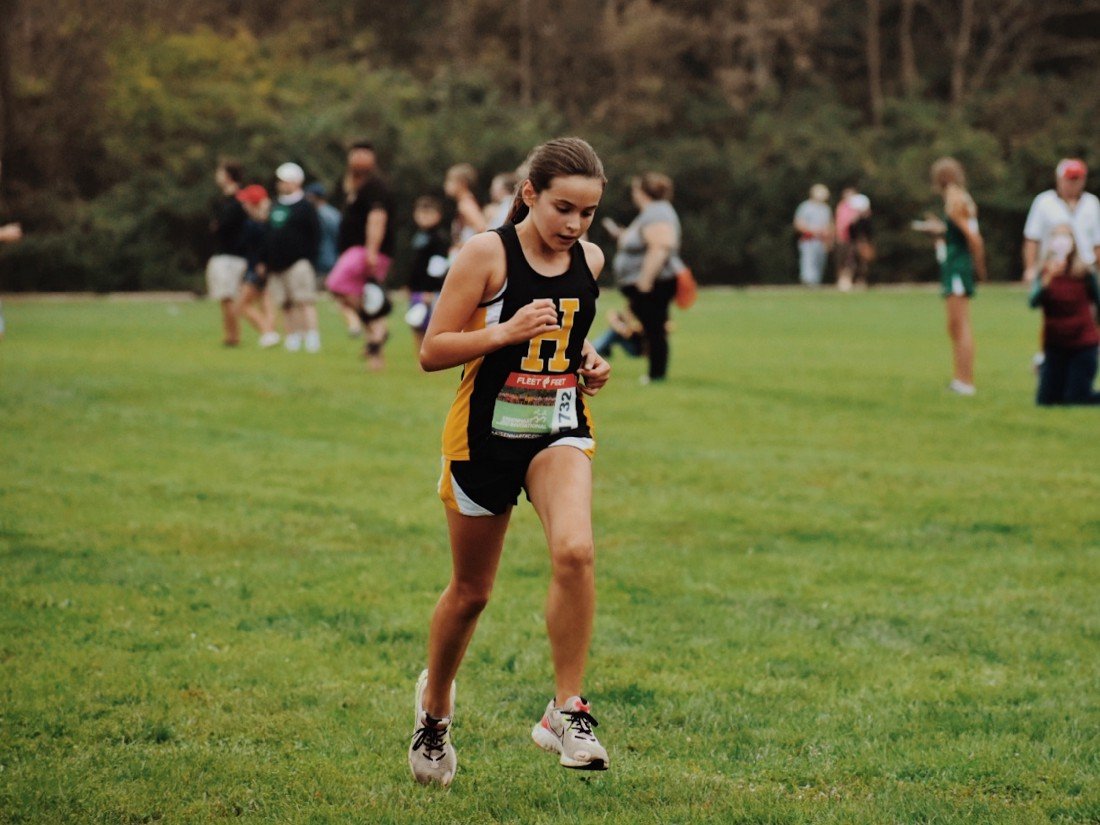How I Grew from Compulsive Exerciser to Intuitive Mover
And how you can do the same
Photo by leah hetteberg on Unsplash
This article shares details about a child’s and young woman’s unhealthy exercise habits and eating disorder behaviors.
I can still feel the itchy neoprene-laced weights strapped around my bony, 11-year-old ankles.
Despite being uncomfortable, I wore them on my evening walks and runs through the neighborhood. Ya know, a super normal kid thing to do.
Normal like the VHS tape I purchased with my allowance so supermodel Kathy Ireland could lead me through a 12-minute ab circuit every day.
Normal like using my mom’s Gazelle Glider machine while my sisters watched reruns of Saved by the Bell.
Normal like convincing my dad to let me start going to the gym with him so I could get a full-body workout.
Clearly, none of this is normal behavior for a child. But it’s where my story with compulsive exercise began.
I maintained an obsessive relationship with running throughout middle school and high school while simultaneously battling bulimia. When I didn’t have time to run off my food, I walked to the wooded area near my house to purge in seclusion.
The behaviors manifested in college when I had access to the campus rec center. I prioritized the treadmill and stair-stepper over hanging out with friends and even my studies, albeit my emphatic preoccupation with having a 4.0 GPA.
By age 23, I sought treatment for my bulimia and made tremendous progress with my eating behaviors, but I continued running militantly.
My mileage was never long enough. My pace was never fast enough. I didn’t rest or refuel properly, so I suffered multiple injuries. I based how much food I ate on the miles I ran.
The sad truth? So many people can relate to this struggle with exercise, and there are multiple reasons why.
How people become compulsive exercisers
Developing an obsessive relationship with exercise is almost too easy. It can happen at any time, any age, and to just about anyone who nods their head to one or more of these eight risk factors.
Pressure in youth sports
We often (and rightfully so) associate amateur athletics with things like teamwork, self-improvement, discipline, and a healthy lifestyle. But pressure and expectations from others (typically parents and coaches) to meet a certain standard can tip some young athletes over the edge.
Practice outside of team practice becomes a routine.
Workouts grow more intense.
Performance stats are the be-all and end-all.
Going to such great lengths as a still-developing human can implant a sense of normalcy to extreme exercise that carries on for years or decades to come.
Bullying
Breaking news: We live in a world rife with cruelty and superficiality. Aside from my own story, I’ve known and worked with people who resorted to unhealthy amounts of exercise to reshape their figures with the hope of shielding themselves from the unfortunate ridicule they faced in a larger body.
Dieting
Another (not) surprise — dieting and compulsive exercise often go hand-in-hand because of their common denominator: desired weight loss. The whole notion that to lose one pound of fat you must burn 3,500 calories can lead to ruthless hours of physical activity in a single day.
Earning food mentality
Exercise as a precursor to food allowance is wildly common. How often have you heard a comment like, “I shouldn’t have a cookie, I missed my workout today.”?
While true that the more we exercise the more fuel our bodies want and need, directly linking the two with every food decision is like saying you can’t drink water because you’re not thirsty. But these are the strict parameters many compulsive exercisers follow.
Compensatory behavior
On the flip side of earning food, many fall into the trap of using exercise as a means to make up for food they’ve already eaten. Whether a full-on binge or the choice to eat that one cookie, many regularly force extra exercise upon themselves to burn off calories they feel their body didn’t need.
Eating disorders, negative body image, and body dysmorphia
Compulsive exercise behaviors usually tie back to a disordered relationship with food and/or one’s body.
Someone battling an eating disorder, particularly but not exclusively anorexia or bulimia, has a deep-seated fear of weight gain, and compulsive exercise is often integral to maintaining or losing weight.
Likewise, those with extreme body dissatisfaction or a preoccupation with an imagined or perceived body “flaw” are willing to take extreme measures to change it, including engaging in excessive exercise.
Certain personality traits
We all have our own unique genetic predisposition, and some of us are naturally more inclined to become obsessive exercisers. Personality traits common in compulsive exercisers include but are not limited to:
Obsessive-compulsive (I know, shocking)
High-achieving
Perfectionism
Controlling
Neuroticism
Hyper-competitive
Upholding an image
Some people are accustomed to being the “fit” or “athletic” one of the bunch, and parting ways with their militant exercise routine can provoke fear and anxiety.
In their minds, they must be the one to get up at X time to run X miles before work.
They must hit the gym X days a week for no less than X hours at a time.
They must walk X number of steps each day or they don’t deserve dinner.
The option to veer away from this lifestyle seems non-negotiable if not downright impossible.
How I broke free from the rigidity and how you can do the same
I checked every single one of the boxes above when I evaluated my own rigid relationship with exercise.
Once I opened my mind to see that I was, in fact, suffering, I made a commitment to do something about it. Each action I took had a trickle-down effect.
I had a heart-to-heart with myself
I asked myself some hard questions to understand how dire my exercise obsession was.
What’s my motivation to exercise?
What do I find unhealthy about my exercise behaviors?
What do I ideally want my relationship with exercise to look like?
I sought help
I found a recovery coach who helped me set weekly goals to challenge my unhealthy exercise behaviors. We worked on everything from eliminating my use of a fitness tracker and weening off the scale to chipping away at the distance I ran and adding in dedicated rest days.
If I didn’t meet a goal, we talked about it, and her check-ins kept me accountable to eventually follow through.
I freed myself from the comparison trap
I deactivated my Strava account and unsubscribed from e-newsletters that profiled elite runners so I didn’t find myself in constant comparison mode.
I limited my use of Instagram and Facebook (thankfully, TikTok hadn’t yet been born) to fence off my visibility to photos and reels of running friends and fitness influencers that could trigger me.
Ideally, I would have taken a hiatus from social media altogether, or at least better curated my account to work to my advantage. And though not available at the time, I would’ve definitely updated my Instagram settings to limit my exposure to weight loss ads.
I practiced healthy internal dialogue
My greatest escape from the comparison trap was a good ol’ mindset shift. I responded to uncontrollable first thoughts with healthy and rational second thoughts. Examples:
I wish I could be as fast as her → There will always be someone faster than me. As long as I’m not an Olympic qualifier, I should probably cool my jets.
I can’t believe how many miles he ran → That’s his body and his choice. I know running that much will not serve me well.
I wish I could be as thin as her → All bodies are unique, and I am not aware of the ways she may be suffering.
I embraced the discomfort
Was all of this change hard? Yes.
Was it an imperfect progression? Hell yes.
Did I feel like throwing in the towel at times? Fuck yes.
But I trusted the process and persisted.
I kept reverting back to why I wanted these changes.
In time, I welcomed any discomfort I felt in pursuing my recovery goals and challenges.
Fifteen fewer minutes of physical activity today? Sweet! An opportunity to prove to myself I’ll be okay, that my body will be okay.
“Okay” ended up being an understatement. I astonished myself with how free and wholesome I felt.
The more I changed my behavior, the more I changed my mind to want and believe in my ability to thrive without unregimented exercise.
What I should’ve done more of and highly recommend
Surround yourself with people who lift you up.
Go on walks or light runs with those who stay active for their health and aren’t trying o be the next Lynn Jennings. Again, this is not a knock on others. We each have our own goals, desires, battles, and demons, but you need to prioritize your needs.
What exercise looks like for me today
Today, specifically, I actually don’t plan to exercise much at all. Aside from some stretching and a stroll or two through the neighborhood, this body needs some R&R following a pretty active day yesterday.
Photo of author on a recent “wog.”
But in general, I move my body pretty intuitively, meaning I allow my body and my environment to guide my exercise choices.
I do a good amount of cycling from late spring through early fall and hang the bike up during the brutal Midwest winters.
I wog (a cross between a walk and a jog) year-round. Wogging elevates my heart rate but doesn’t overdo it on my legs if they’re tired or sore.
I pepper in squats, pushups, and situps during work breaks.
I do LSD on the weekends — not the psychedelic (I’m still pretty straight edge). LSD as in “long slow distance.” I refrain from sharing numbers due to their subjectivity and triggering nature, but these runs are “long” by my standards. I go at a gentle pace, often take photos along the way, and turn around when my body signals it’s reached the halfway point. I still don’t get this exactly right every time, but I do my best.
I jump rope for a quick workout and do yoga when I need some recentering and restoration.
Whatever my movement of choice, I am enjoying — or am at the very least content — with it.
In every case, my main motivation behind exercise is achieving holistic health; not chasing a smaller body or impulsively reacting to distorted thought patterns.
No more dread.
No more incessant mental and physical depletion.
No more berating myself if the day gets away from me and I didn’t get a complete workout in.
This is what works for me given my history and hopes around exercise.
Like anything, it’s up to you to craft the framework of your desired relationship with exercise.
You have to determine if there’s a need for change.
You have to want a change.
You have to put in the work to make that change.
If you do, I promise on my beautiful, thriving, enough-as-it-is body you’ll be glad you did.
Like what you just read?
Join my email list to receive a free copy of the 10 Keys to Food & Body Liberation, as well as weekly affirmations, inspirational stories, and more to help you find lasting peace with how you eat, move, and view your body.



